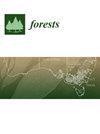通过整合单个机器学习模型改进森林地上生物量估算
IF 2.4
2区 农林科学
Q1 FORESTRY
引用次数: 0
摘要
准确估算森林地上生物量(AGB)对于可持续森林管理和跟踪森林生态系统的碳循环至关重要。事实证明,机器学习算法在利用遥感数据估算森林地上生物量方面具有巨大潜力。尽管许多研究已经证明,在许多情况下,单一的机器学习模型可以对森林 AGB 进行高精度的估算,但仍需努力探索针对特定研究场景对森林 AGB 估算的可能改进。本研究旨在探讨新型集合机器学习方法在估算森林 AGB 方面的性能,并分析这些方法是否会受到森林类型、自变量和空间自相关性的影响。在研究中,根据两个研究区域、两种变量类型和两种验证策略设计了八种方案,比较了四种著名的机器学习模型(CatBoost、LightGBM、随机森林(RF)和XGBoost)在森林AGB估算中的表现。随后,提出了一种结合了这些单独模型优点的混合模型,用于森林 AGB 的估算。研究结果表明,没有一个模型在所有情况下都优于其他模型。RF 模型在第 5、6 和 7 种情况下表现优异,而 CatBoost 模型在其余情况下表现最佳。此外,尽管存在一些不确定性,但所提出的混合模型在所有场景中都始终保持最佳性能。本研究为混合模型开发的集合策略大大提高了估计精度,并表现出更高的稳定性,有效解决了森林 AGB 预测过程中遇到的模型选择难题。本文章由计算机程序翻译,如有差异,请以英文原文为准。
Improving Forest Above-Ground Biomass Estimation by Integrating Individual Machine Learning Models
The accurate estimation of forest above-ground biomass (AGB) is crucial for sustainable forest management and tracking the carbon cycle of forest ecosystem. Machine learning algorithms have been proven to have great potential in forest AGB estimation with remote sensing data. Though many studies have demonstrated that a single machine learning model can produce highly accurate estimations of forest AGB in many situations, efforts are still required to explore the possible improvement in forest AGB estimation for a specific scenario under study. This study aims to investigate the performance of novel ensemble machine learning methods for forest AGB estimation and analyzes whether these methods are affected by forest types, independent variables, and spatial autocorrelation. Four well-known machine learning models (CatBoost, LightGBM, random forest (RF), and XGBoost) were compared for forest AGB estimation in the study using eight scenarios devised on the basis of two study regions, two variable types, and two validation strategies. Subsequently, a hybrid model combining the strengths of these individual models was proposed for forest AGB estimation. The findings indicated that no individual model outperforms the others in all scenarios. The RF model demonstrates superior performance in scenarios 5, 6, and 7, while the CatBoost model shows the best performance in the remaining scenarios. Moreover, the proposed hybrid model consistently has the best performance in all scenarios in spite of some uncertainties. The ensemble strategy developed in this study for the hybrid model substantially improves estimation accuracy and exhibits greater stability, effectively addressing the challenge of model selection encountered in the forest AGB forecasting process.
求助全文
通过发布文献求助,成功后即可免费获取论文全文。
去求助
来源期刊

Forests
FORESTRY-
CiteScore
4.40
自引率
17.20%
发文量
1823
审稿时长
19.02 days
期刊介绍:
Forests (ISSN 1999-4907) is an international and cross-disciplinary scholarly journal of forestry and forest ecology. It publishes research papers, short communications and review papers. There is no restriction on the length of the papers. Our aim is to encourage scientists to publish their experimental and theoretical research in as much detail as possible. Full experimental and/or methodical details must be provided for research articles.
 求助内容:
求助内容: 应助结果提醒方式:
应助结果提醒方式:


